Back to working on the big engine (Raven 4-6-2 class) with lubricators, sandbox filers and a small footplate handrail.
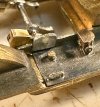
The lubricator was ‘lost plastic’ cast from a very detailed 3DP courtesy of Simon & Andy Grand. It is amazing how the detail has picked up in the casting.
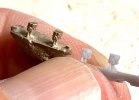
The base peg was used to help locate the steel running plate that is also held down by magnets. The sand box filler also started off as a peg through a hole into the brass sub-structure. As always, easier to start with a large component - to hold whilst soldering - and then trim to size.
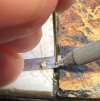
The little nickel silver handrail was bent up with two locating holes in the running plate and a spacer gauge whittled from a scrap of paxolin.
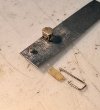
This was then soldered in place clamping the handrail between some jaws of titanium tweezers (they don’t take solder) and soldered in place from underneath. Any excess solder and wire was simply filed away.
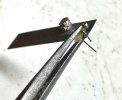
Finally, a picture of the prototype for comparison.

Tim






















